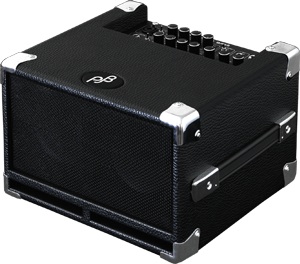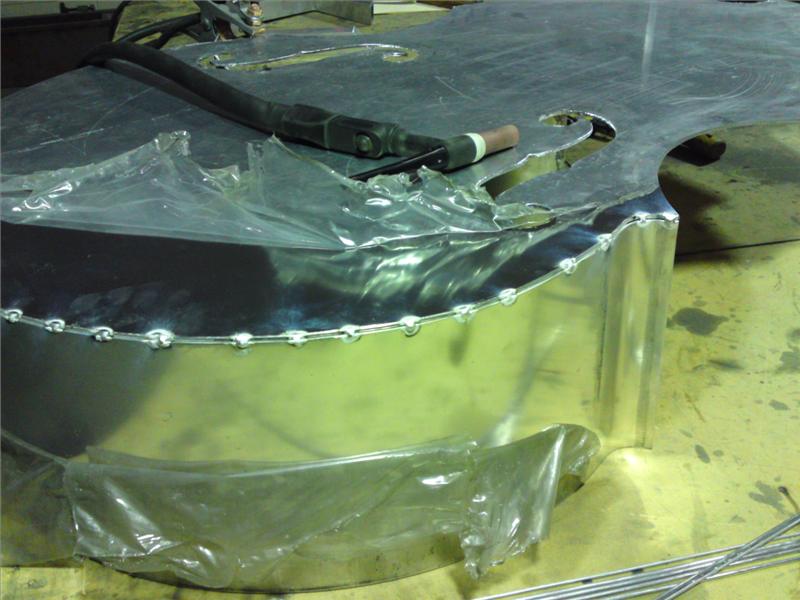This link tip is not double bass related, but really, really groovy: 13-year old Pipquinha at the electric bass guitar.
Author Archives: Jonas
Bill Evans radio interview
September 15th marks the 30th anniversary of Bill Evans’ passing. Ross Porter’s interview with Bill Evans, one of the last that Evans ever gave, can be listened online at Jazz.FM91, the canadian jazz radio station.
The conversation was recorded on May 21, 1979 at Bill Evans’ appartment at New Jersey and in his car, while on the road to Manhattan. It also features excerpts of recordings of the late Bill Evans Trio(s) with bassists Scott LaFaro, Chuck Israels and Eddie Gomez (who is mistakenly announced by Porter as Scott LaFaro in “All of You”).
European Bass Day (Krefeld/Germany)
At Krefeld/Germany, the European Bass Day will take place next weekend. In this case, “Bass” means Electric Bass Guitar … I can’t find anything double bass related at their website. So take your earplugs with you if you go there 😉
Flying with the double bass
The American Federation of Musicians is gathering signatures on a petition to urge Congress to adopt uniform rules for musicians to carry on or check their instruments aboard U.S. planes.
To view the bill as currently written, go to http://www.opencongress.org/bill/111-s1451/text.
Section 713 “Transporting Musical Instruments” a.(3) provides for instruments too large to be carried into the cabin to be checked without additional charge (!), maximum combined linear measurements 150 inches, and maximum weight 165 pounds. You’ll have to sign in and create an account in order to sign the petition.
Cremona Mondomusica
Mondomusica, the Italian Music Trade show at Cremona, focusses on Jazz this year, with an international seminar on jazz teaching, four masterclasses and the Mondomusica Jazz Club.
gear review: PJB Bass Cub
 It’s really fun to carry the Bass Cub in it’s gigbag. 6 kg seem to me as almost no weight at all, compared to my other amps. I think you can’t built a bass amp much smaller and lighter than this.
It’s really fun to carry the Bass Cub in it’s gigbag. 6 kg seem to me as almost no weight at all, compared to my other amps. I think you can’t built a bass amp much smaller and lighter than this.
Like all PJB amps, the Bass Cub has an high impedance input (4 MOhm in this case), which makes it suitable for piezo pickups, and uses speakers with 5″ diameter only.
Last weekend, I tried out the Bass Cub on an outdoor gig, on the streets of a friend’s hometown which had 750th anniversary (the village, not the friend, of course ;-). The overall volume of the Bass Cub was absolutely sufficient for this band (double bass + three guitars/voice/bluesharp). But due to the lack of room acoustics (no room at all … just a tent to protect us against the rain), the bass reproduction was rather weak. For a gig like this, a larger cabinet is the better choice.
Back home, I tried the Bass Cub in my rehearsal room. As expected, the bass frequencies sounded much more powerful there. I’ve put the Bass Cub on the floor, and moved it around in the room. With the amp facing a room’s corner, with aprox. 1 m distance to the wall, it sounded best.
Conclusion: the Bass Cub offers a amazingly good “size-to-sound”-ratio, which makes it a very transportable amp rehearsals or gigs in small clubs. The Stereo input was designed to plug-in a drum machine or iPod – very useful for practising. With preamp-out and DI out, the Bass Cub can also be used on larger stages – as preamp and/or stage monitor with FOH, or with an active speaker cabinet.
Gottlieb’s jazz photographs at Flickr
William P. Gottlieb’s photos document the jazz scene in New York City and Washington, D.C., from 1938 to 1948, a time recognized by many as the “Golden Age of Jazz”. More than 200 fantastic photos are now available in Flickr, and more photos will be added each month until all 1,600 are in Flickr. More about William Gottlieb at the Library’s Performing Arts Encyclopedia, Gottlieb Collection.
(By the way: the bassits shown in this photo is bassmaker and author Chuck Traeger …)
Aluminium double basses

For Dave Gartland, bassplayer with background in sheet metal working, double basses made of Aluminium have always been fascinating. Over the years, he has collected much informations about these instruments, and he finally started building an Aluminium double bass of his own. He plans to update his website regulary with pictures of the progress.
The most Aluminium basses have probably been made during the 1930ies, before WWII. Dave says about these basses: “American made Aluminum instruments are unique in the fact that they were seamlessly welded whereas the Europeans used rivets & screws. This single tell-tale identifier can be used to spot one from across the room. The Europeans used spruce bass bars, blocks and sound post platforms as well as Maple necks whereas the American made instruments are entirely aluminum. It is our opinion that the European made basses, due to their construction, have a much better tone. The rivets allow luthiers the opportunity to disassemble the instruments for maintenance and repairs when needed. The American made ALCOA basses are far stronger though and can withstand the rigors of time (and abuse) much better.”
4th World Bass Festival
The Polish Society of Double Bassists invites to participate in the events of the 4th World Bass Festival in Wroclaw 8th-14th of August 2010. The event is organized as a biennale since 2004. This year, special for you during festival week 35 classic and jazz soloists will play recitals, chamber concerts and conduct master classes in the concert halls in the center of the historical city Wroclaw.
2010 Fifth Beijing International Double Bass Music Festival
Supported by the Beijing municipal government, cosponsored by the Double Bass Society under the Chinese Musician Association and China Conservatory of Music, this year’s 2010 Fifth Beijing International Double Bass Music Festival will take place in Beijing starting from Nov. 15 to Nov. 20, 2010. The world famous Bassiona Amorosa ensemble and eight renowned double bass players from Germany, the United States, Russia and other countries will be invited to hold special concerts and have master classes during the festival. Meanwhile, in order to further the cultural exchange between China and the abroad double bass field as well as promote the composition, education, and performance of Chinese musical works for double bass, the first Chinese Double Bass Works Performance Show will also be held during the festival. As an important part of the festival, the Chinese Works Performance Show will officially be held regularly from this year forward.
The Beijing International Double Bass Music Festival organization committee and the arts council shall be responsible for organizing and planning the event while the performance show jury committee will be responsible for judging.
The performance show awards include a Performance Award (comprised of an Excellent Performance Award and Performance Award), the Best Teacher Award (given to the tutors who have guided and encouraged the outstanding performers), and the Best Chinese Double Bass Works Award (categorized according to the different forms of double bass compositions and arrangements). Each year’s performance show trophy will be named after the senior generation bass players and educators who have greatly contributed to the Chinese double bass community.
Venue: China Conservatory of Music
Requirements: Play a piece of Chinese work, any form is accepted (i.e. solo, un-accompaniment, ensemble, etc.). No age restriction.
Website: www.ccmusic.edu.cn

![[Portrait of Wilbur De Paris, Sammy Price, Sidney De Paris, Eddie (Emmanuel) Barefield, and Charlie Traeger, Jimmy Ryan's (Club), New York, N.Y., ca. July 1947] (LOC)](http://farm5.static.flickr.com/4085/4843740198_d9c7c62404.jpg)